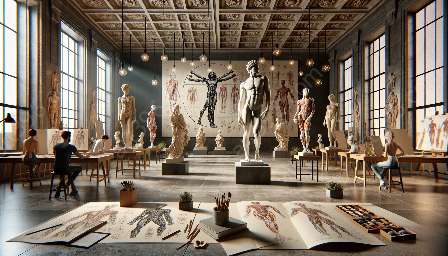Human anatomy is the study of the structure and form of the human body. Understanding the fundamental principles of human anatomy is crucial for a variety of disciplines, including character design and artistic anatomy. This comprehensive guide delves into the intricate details of human anatomy to provide a holistic understanding of the human form.
Introduction to Human Anatomy
Human anatomy is a fascinating subject that explores the intricacies of the human body. It encompasses the study of bones, muscles, organs, and systems that collectively form the human form. The fundamental principles of human anatomy provide the foundation for understanding the structural and functional aspects of the body.
Structural Elements of Human Anatomy
The human body consists of various structural elements that contribute to its form and function. Bones, muscles, tendons, ligaments, and organs are the building blocks of the human body. Understanding the arrangement and interaction of these elements is essential for character design and artistic anatomy.
Bones
Bones form the framework of the body, providing support, protection, and mobility. They come in different shapes and sizes, each serving a specific purpose. Knowledge of bone structure is crucial for creating accurate character designs and realistic artistic representations.
Muscles
Muscles are responsible for movement and posture. They work in conjunction with bones to facilitate motion and provide stability. Character designers and artists need to understand muscle anatomy to accurately depict the dynamics of the human body in their creations.
Organs and Systems
The human body houses various organs and systems, each with unique functions. Understanding their structure and interconnections is vital for creating characters that reflect realistic anatomical features.
Form and Function
The form and function of the human body are intricately intertwined. Form refers to the physical appearance and structure of the body, while function pertains to the physiological processes and capabilities. Character designers and artists must grasp the relationship between form and function to create authentic and expressive human figures.
Application in Character Design
Character design involves creating visually appealing and emotionally engaging characters for various media, including animation, gaming, and storytelling. An understanding of human anatomy is essential for designing characters with believable and expressive physical attributes.
Proportions and Dynamics
Proper proportions and dynamics are critical for character design. Knowledge of human anatomy helps artists accurately depict body proportions, movements, and expressions, resulting in more relatable and captivating characters.
Character Differentiation
Human anatomy serves as a foundation for character diversity. Understanding anatomical variations enables designers to create characters with distinctive physical traits, enhancing the richness and depth of storytelling and visual narratives.
Artistic Anatomy
Artistic anatomy focuses on the representation of the human body in visual arts, encompassing traditional drawing, painting, sculpture, and digital art. A thorough understanding of human anatomy is imperative for artists to create compelling and realistic portrayals of the human form.
Anatomical Accuracy
Artistic anatomy demands anatomical accuracy in artistic depictions. Artists need to comprehend human anatomy to accurately capture the complexity and beauty of the human body in their creations.
Expressive Interpretation
While understanding anatomical fundamentals is essential, artists also have the creative freedom to interpret and express the human form in unique and imaginative ways. Knowledge of human anatomy provides a solid foundation for pushing artistic boundaries while maintaining realism and coherence.
Conclusion
The fundamental principles of human anatomy form the cornerstone for various disciplines, including character design and artistic anatomy. By mastering the intricacies of human anatomy, creators can imbue their characters and artworks with authenticity, depth, and emotive power, enhancing the impact and resonance of their creative endeavors.

